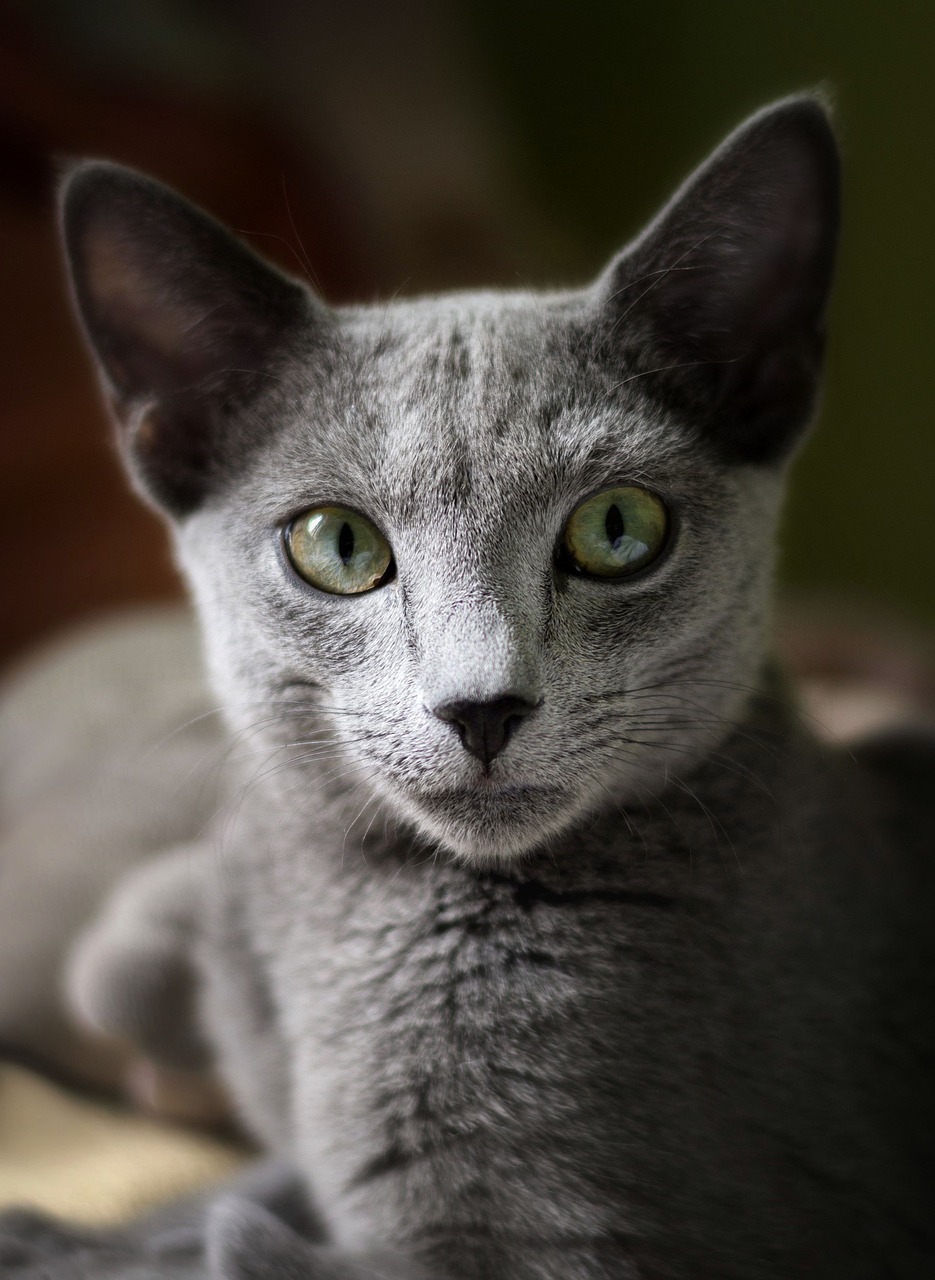Train Your Russian Blue Cat
If you’re fortunate enough to share your home with one of these majestic felines, you may be interested in harnessing their potential through training.
Training your Russian Blue cat not only stimulates their active minds but also strengthens your bond with them.
In this comprehensive guide, we will explore effective training techniques, tips, and strategies to help you bring out the best in your Russian Blue companion.
Understand Your Russian Blue’s Personality:
Before diving into training, it’s crucial to understand your Russian Blue’s unique personality traits. These cats are generally intelligent, curious, and eager to please their owners. They are quick learners and enjoy mental challenges. By recognizing these qualities, you can tailor your training methods to suit their needs and preferences.
Start with Positive Reinforcement:
Positive reinforcement is a highly effective training technique that encourages desired behaviors. Reward your Russian Blue with treats, praise, or playtime whenever they exhibit the behavior you want to reinforce. This method creates a positive association with the desired action and motivates them to repeat it.
Use Clicker Training:
Clicker training is a popular method that uses a small handheld clicker to mark the desired behavior. The sound of the clicker serves as a signal to your Russian Blue that they have performed correctly, and a reward will follow. By pairing the clicker with treats or affection, your cat will quickly associate the click with positive reinforcement.
Begin with Basic Commands:
Teaching basic commands lays the foundation for more advanced training. Start with simple commands like “sit,” “stay,” and “come.” Break down each command into small steps, rewarding your Russian Blue for each successful attempt. Consistency and repetition are key, so practice these commands in short sessions daily.
Encourage Interactive Play:
Russian Blue cats love interactive play sessions, which not only provide physical exercise but also mental stimulation. Use interactive toys, feather wands, or laser pointers to engage your cat’s hunting instincts. This type of play helps prevent boredom and channels their energy in a positive direction.
Create a Stimulating Environment:
Enriching your cat’s environment is essential for its overall well-being. Provide scratching posts, puzzle toys, and climbing trees to keep them physically active and mentally stimulated. Russian Blues are known for their agility, so creating vertical spaces for them to explore will help fulfill their instincts.
Litter Box Training:
Litter box training is crucial for a harmonious living environment. Ensure the litter box is easily accessible, clean, and filled with a litter type your Russian Blue prefers. If accidents occur, avoid scolding and instead redirect their attention to the appropriate spot. Positive reinforcement and patience will help your cat learn to use the litter box consistently.
Socialize Your Russian Blue:
Russian Blues are social cats and generally get along well with humans and other pets. Early socialization is vital to prevent shyness or fearfulness. Introduce your cat to different people, environments, and gentle interactions with other animals. This exposure helps build their confidence and ensures they are comfortable in various situations.
Handling and Grooming:
Regular handling and grooming are essential for a healthy and well-adjusted Russian Blue. Start by gently touching their paws, ears, and mouth to accustom them to being handled. Gradually introduce brushing and nail trimming sessions, rewarding your cat’s cooperation each time. Positive associations with grooming routines will make these tasks easier in the long run.
Be Patient and Consistent:
Training any cat, including Russian Blues, requires patience, consistency, and a gentle approach. Cats have their personalities and may progress at different rates. Celebrate small achievements and be understanding if your Russian Blue experiences setbacks or difficulties. Consistency is key, so establish a regular training schedule and stick to it.
Avoid Punishment:
Punishment is not an effective training method for Russian Blue cats or any cat for that matter. Harsh punishments or yelling will only create fear and anxiety, damaging the trust between you and your cat. Instead, focus on positive reinforcement and redirect unwanted behaviors towards more appropriate alternatives.
Seek Professional Help if Needed:
If you encounter challenges or feel overwhelmed during the training process, don’t hesitate to seek professional help. A certified animal behaviorist or experienced cat trainer can provide valuable guidance, personalized strategies, and tips specific to your Russian Blue’s needs.
Health and Well-being:
Remember that training should always prioritize your cat’s health and well-being. Ensure they have a nutritious diet, plenty of fresh water, regular veterinary check-ups, and a safe, stimulating environment. A happy and healthy cat is more receptive to training and forms a stronger bond with their owner.
Enjoy the Journey:
Training your Russian Blue cat is not just about achieving specific goals; it’s also about strengthening your relationship and enjoying the journey together. Embrace the process, celebrate small victories, and cherish the moments of bonding and mutual understanding. The time spent training your Russian Blue will create lifelong memories and deepen your connection.
Conclusion:
Training your Russian Blue cat is a rewarding endeavor that brings numerous benefits for both you and your feline companion.
By understanding their unique personality, using positive reinforcement techniques, and providing a stimulating environment, you can shape their behavior, enhance their skills, and create a harmonious living environment.
Remember to be patient, consistent, and always prioritize your cat’s well-being.
With love, patience, and dedication, you’ll build a strong bond and witness the incredible potential of your Russian Blue as a well-trained and contented companion.
